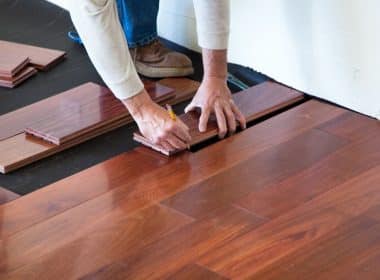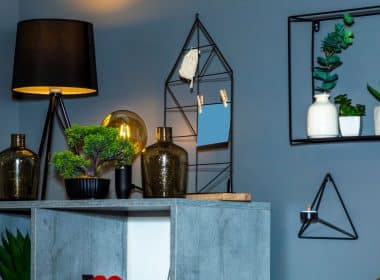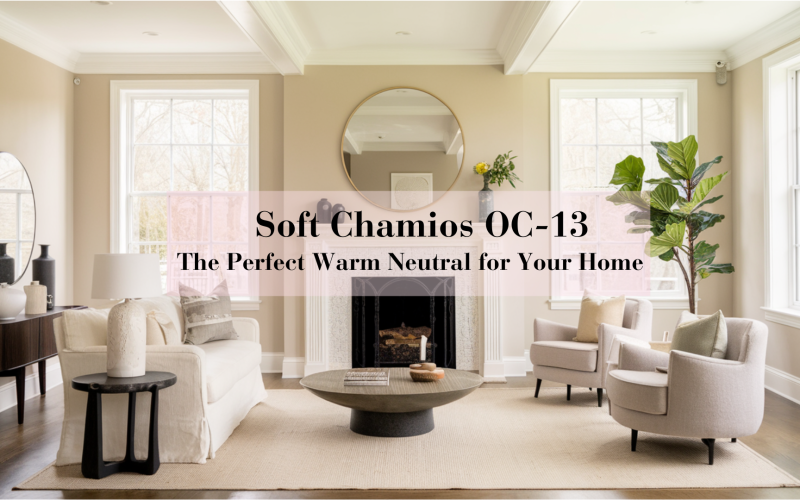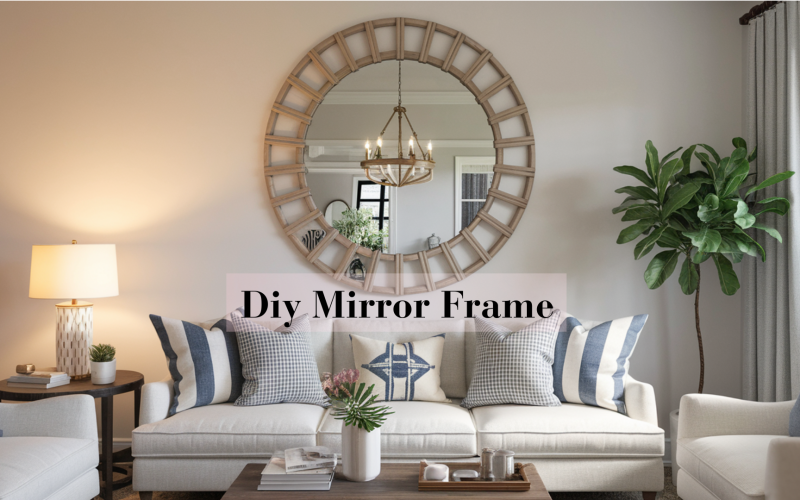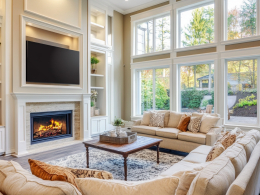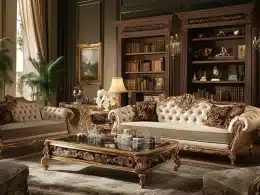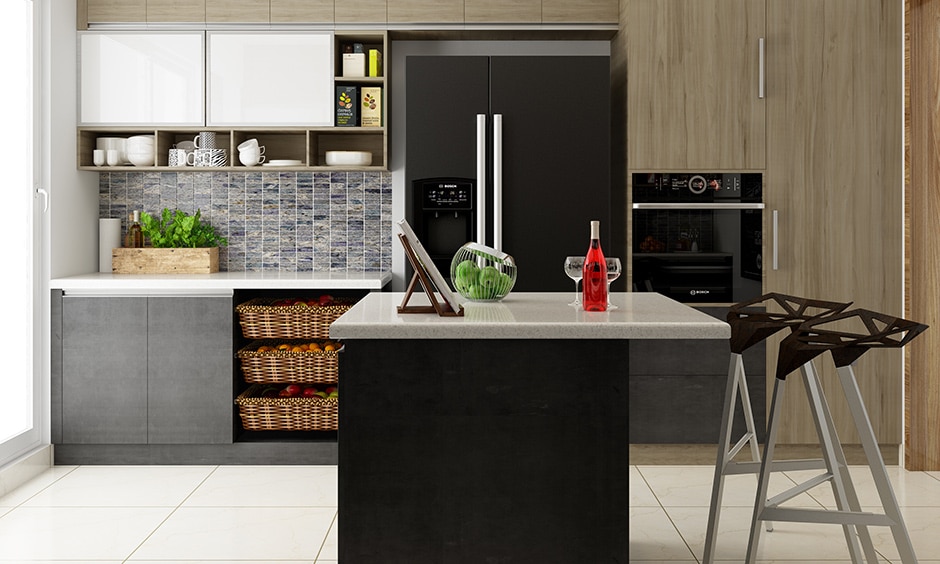Soft Chamois (OC-13) by Benjamin Moore is a gentle off-white paint option that brings warmth to any space.
This subtle shade offers a clean look without feeling cold or stark.
Part of Benjamin Moore’s Off-White Collection, Soft Chamois provides a soft backdrop that works well in various lighting conditions.
During daylight hours, it appears light and clean, while evening light brings out its warm qualities without turning yellow.
For homeowners seeking a neutral that feels inviting rather than plain, this color creates a welcoming feel.
With its balanced undertones, Soft Chamois pairs nicely with many design styles, from classic to modern homes.
Color Characteristics and Undertones
Soft Chamois (OC-13) brings a gentle warmth to walls while maintaining its status as a true neutral.
This well-balanced color sits comfortably between white and beige, creating a comfortable base that lets other design elements stand out.
Understanding the Undertones of Soft Chamois
Soft Chamois (OC-13) stands out because it lacks strong color bias.
According to color reviews, this paint has no yellow, blue, or pink undertones. Some describe it as a “milky beige” rather than a true white.
This neutral quality makes it useful in rooms with various fabrics and furniture tones.
The Light Reflectance Value (LRV) of Soft Chamois affects how the color appears in your home. With a moderate LRV, this paint absorbs some light while still brightening spaces.
In north-facing rooms, it stays warm without becoming too dark.
In sunny south-facing spaces, it maintains its character without washing out.
How Soft Chamois Compares to Other Benjamin Moore Whites
When compared to Ballet White, Soft Chamois appears slightly lighter and less beige. Ballet White has more depth but shares a neutral balance.
Swiss Coffee’s makeup has more yellow than Soft Chamois’s. While Swiss Coffee creates a cozier feel, Soft Chamois maintains a cleaner look.
White Dove shows more brightness and a hint of gray. White Dove reads as a true white in most settings, while Soft Chamois always maintains its soft, warm identity.
Ideal Rooms for Soft Chamois
Soft Chamois works well in nearly any room of the house.
Its neutral character makes it useful for whole-house color schemes, while its warm qualities add comfort to individual spaces.
Bedroom

In bedrooms, Soft Chamois creates a restful background that promotes sleep while still keeping the space feeling open.
The color’s warmth makes bedrooms feel cozy without being too dark.
Kitchen

Soft Chamois on walls or cabinets benefits kitchens.
The color pairs well with both light and dark countertops and doesn’t compete with food or decor.
It keeps the kitchen bright while adding more interest than plain white.
Living Room

Living rooms with Soft Chamois walls feel welcoming and clean.
The color provides a good backdrop for artwork and furniture without fading away completely.
Bathroom

Bathrooms painted in Soft Chamois gain a spa-like quality.
The color reflects light well enough to keep small bathrooms feeling open while adding more warmth than stark white.
Can Soft Chamois be Used in High-Traffic Areas?
Soft Chamois performs well in busy spaces when paired with the right Benjamin Moore paint finish.
For hallways and family rooms, a pearl or eggshell finish allows for easier cleaning without showing too much shine.
The paint’s light tone means it won’t show dust as much as darker colors might.
However, like most light paints, it will show marks and scuffs over time.
For extra protection in high-touch zones, using a quality primer before applying Soft Chamois helps with long-term wear.
Regular spot cleaning with mild soap and water keeps the walls looking fresh without damaging the finish.
How to Use Soft Chamois in Your Home
Soft Chamois provides a simple yet effective background for many design styles.
This neutral works as either a main color or supporting tone in your home’s color scheme.
Tips for Applying Soft Chamois on Walls
For best results, start with clean, smooth walls. Fill any holes or cracks and sand rough spots before painting.
A good quality primer helps Soft Chamois show its true color, especially when covering darker shades.
Apply Soft Chamois with a roller for large areas and a high-quality brush for edges and trim.
Most rooms need two coats for even coverage. According to the paint can instructions, allow proper drying time between coats.
For finish options, matte works well in low-traffic areas and hides wall flaws.
Eggshell offers a bit more durability for living areas, while pearl or semi-gloss suits trim and doors that need frequent cleaning.
Best Complementary Colors for Soft Chamois
| Area | Complementary Color | |
|---|---|---|
| Trim | White Dove OC-17 | |
| Accent Walls | Stonington Gray HC-170 | |
| Cabinetry | Chelsea Gray HC-168 | |
| Front Door | Hale Navy HC-154 | |
| Ceiling | Simply White OC-117 | |
| Furniture | Palladian Blue HC-144 | |
| Exterior | Gray Owl OC-52 |
These colors work with Soft Chamois because they share their balanced undertones while offering good contrast.
The whites keep spaces feeling open, while the deeper tones add visual interest without clashing.
Customer Reviews and Real-Life Applications
Soft Chamois has earned its place as a popular choice for homeowners and designers alike. The color’s balanced nature makes it useful in many settings.
What People Are Saying About Soft Chamois
Homeowners frequently praise the color’s ability to stay neutral across different light conditions. The Joyful House blog states, “It’s a milky beige.
It has no yellow undertone, no blue undertone, and no pink undertone.”
Kitchen renovations with Soft Chamois received positive comments for how well the color works with various countertops.
Houzz discussions show users appreciating its compatibility with both travertine and granite.
Claire Jefford describes it as “a lovely, warm neutral” with “a beautiful lightness to it, wonderful for traditional and modern rooms.”
Living room applications get high marks for making spaces feel bigger and cozier.
One reviewer notes, “During the day, it looks light and beautiful, and at night, it is warm but not yellow or dirty.”
North-facing rooms benefit from Soft Chamois, which adds warmth to spaces that might otherwise feel cool without becoming too heavy.
Conclusion
Soft Chamois offers homeowners a reliable, warm neutral that works in many settings.
Its lack of strong undertones makes it a safe yet interesting choice for walls, trim, and cabinets throughout the home.
This color shines in both bright and dim lighting, maintaining its soft character without shifting to unwanted tones.
Whether you’re painting a single room or looking for a whole-house color, Soft Chamois provides a clean backdrop that lets your furniture and decor take center stage.
For those seeking a paint color that bridges the gap between white and beige, Soft Chamois delivers an inviting balance.
Try a sample on your walls to see how this gentle neutral can transform your space.
Frequently Asked Questions
What is the undertone of Soft Chamois?
Soft Chamois is unique because it has no strong undertones – no yellow, pink, or blue. It’s a balanced neutral that some describe as a “milky beige.”
Is Soft Chamois a warm or cool color?
Soft Chamois is a warm color. It provides gentle warmth without becoming too yellow or beige, making spaces feel inviting rather than stark.
How does Soft Chamois compare to Swiss Coffee?
Swiss Coffee has more yellow undertones than Soft Chamois. While Swiss Coffee reads creamier and cozier, Soft Chamois maintains a cleaner, more neutral appearance.

